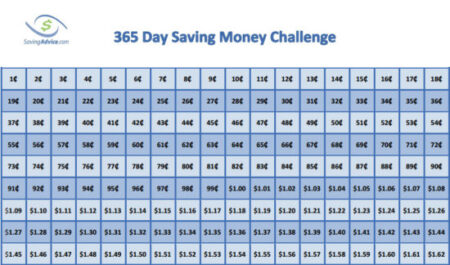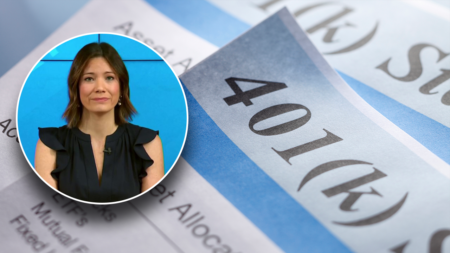As millions of student loan borrowers prepare to get their first student loan bills in more than three years, some said they would refuse to pay.
In fact, one in four Americans with student loan debt said they’ll boycott student loan payments when they are set to resume on Oct. 1, according to a poll commissioned for Newsweek. And 33% said they would maybe consider refusing to pay.
Student loan payments are set to resume on Oct. 1 following a federal pause approved by President Donald Trump at the onset of the COVID-19 pandemic in March 2020. After these provisions had been extended multiple times under President Joe Biden’s administration, interest began to accumulate in September.
But moving forward, many borrowers said they aren’t prepared to fit student loan payments back into their budgets. More than half (58%) of borrowers with student loan debt said they will have difficulty paying it off, the Newsweek poll said. And 24% said they owe more than $10,000.
The average student loan balance is $37,718, according to Educationdata.org. Additionally, more than a third of Americans believe student loan payment resumption will add $1,000 to their monthly payments, a survey by Empower said. And that can deliver a significant impact to those who’ve acquired external debt within the payment pause.
“Over the course of the student loan payment pause, many consumers who currently have student loans acquired new credit products, increasing their monthly payment obligations,” Liz Pagel, TransUnion’s senior vice president of consumer lending, said in a statement. “For many consumers, their total monthly payments today, without student loan payments, exceed what they were paying in aggregate in 2020 prior to the pause. Adding the new payments to the mix will be a noticeable payment shock.”
Nonetheless, the Education Department is currently working on various initiatives to offer federal student loan relief to millions. However, these efforts likely won’t support private student loan holders.
If you have private student loans, you may not benefit from Biden’s student loan relief programs. But you could consider lowering your monthly payments by refinancing your loans to a lower interest rate. Visit Credible to get your personalized rate in minutes.
STUDENTS HEADED FOR COLLEGE WORRIED THEY DON’T HAVE THE MONEY TO PAY FOR IT, SURVEY SAYS
Biden to launch student loan default safety net
To help financially troubled student loan borrowers, the Education Department has launched its on-ramp program, designed to temporarily help Americans avoid significant damage to their credit.
The on-ramp student loan program is scheduled to run from Oct. 1 to Sep. 30, 2024, the Department of Education said.
“Financially vulnerable borrowers who miss monthly payments during this period are not considered delinquent, reported to credit bureaus, placed in default or referred to debt collection agencies,” the White House said in a statement.
The on-ramp initiative is part of the Biden administration’s ongoing effort to provide student loan relief. This includes the new Saving on A Valuable Education (SAVE) income-driven repayment (IDR) plan. The SAVE plan can lower monthly payments to zero dollars or help borrowers making payments save at least $1,000 a year.
Additionally, the Biden administration announced it still intends to offer widespread student loan forgiveness. The president’s previous attempt was struck down by the Supreme Court last summer. That plan could have wiped out up to $20,000 in student loan debt for individuals making less than $125,000 a year. The administration failed to justify the move under the Higher Education Relief Opportunities for Students (HEROES) Act of 2003. The Education Department next plans to pursue its mission under provisions in the Higher Education Act of 1965. But that move is likely to face fierce opposition as well.
“This path is going to take time, but we’re committed to doing everything we can to provide as much relief to as many borrowers as possible, and as quickly as possible,” Education Secretary Miguel Cardona said in a webinar last summer.
Private student loan borrowers won’t benefit from federal income-driven repayment plans. But you could consider refinancing your loans to a lower rate to cut your monthly payments. Visit Credible to compare your options without affecting your credit score.
OVER 4 MILLION STUDENT BORROWERS ENROLL IN BIDEN’S SAVE FORGIVENESS PLAN
What happens if you default on your student loans?
Although President Biden’s on-ramp program offers cash-strapped borrowers some form of safety net if they’re at risk of default, it’s temporary. And widespread student loan forgiveness down the road is no guarantee.
Student loan borrowers who fall into default may face severe consequences. A student loan becomes delinquent a day after missing payment, according to StudentAid.gov. After being delinquent for more than 90 days, the loan servicer reports it to the three major national credit bureaus, which could impact a borrower’s credit score.
Generally, federal student loans made under the William D. Ford Federal Direct Loan Program or the Federal Family Education Loan Program become delinquent after more than 270 days of missed payment following the date of scheduled payment.
Here are some of the potential consequences of defaulting on student loans.
Garnished wages: Employers may be required to withhold portions of borrowers’ paychecks to pay off defaulted loans.
Treasury offset: Tax refunds and federal benefits could be withheld and applied toward repayment of defaulted loans.
Loss of federal aid: Borrowers who default may lose access to federal repayment plans as well as deferment and forbearance options.
If you have private student loans, federal assistance may not be available to you. But you could consider lowering your monthly payments by refinancing your loans to a lower rate. Visit Credible to speak with a student loan expert and get your questions answered.
HERE’S HOW TO LOWER YOUR MONTHLY STUDENT LOAN PAYMENTS
Have a finance-related question, but don’t know who to ask? Email The Credible Money Expert at moneyexpert@credible.com and your question might be answered by Credible in our Money Expert column.
Read the full article here










